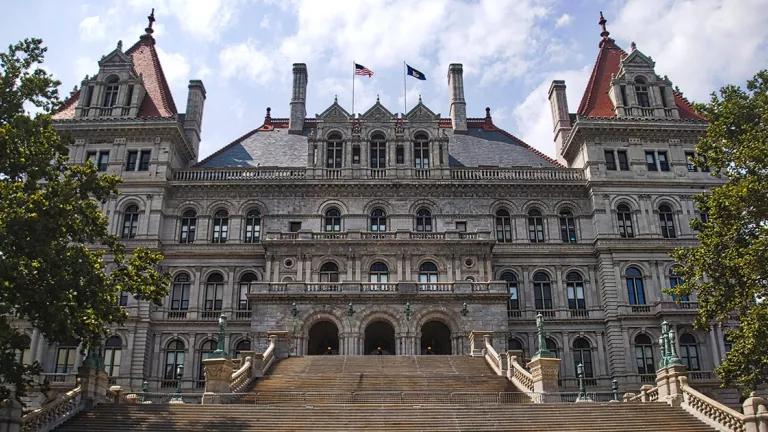NYS Paint Waste Bill Awaits Cuomo’s Finishing Touch
Leftover paints—one of the more problematic items in the municipal waste stream—are likely to be fished out of millions of garages and basements from Montauk to Niagara Falls and disposed of properly, thanks to a forward-looking law recently passed by both houses of the New York State Legislature.

When the Paints Come Marching In: NYS is poised to adopt new program that requires paint manufacturers to establish leftover paint collection operation convenient to the public.
Leftover paints—one of the more problematic items in the municipal waste stream—are likely to be fished out of millions of garages and basements from Montauk to Niagara Falls and disposed of properly, thanks to a forward-looking law recently passed by both houses of the New York State Legislature.
The idea, which NRDC and our environmental allies have long supported, is to transfer the burden of disposing of unused paint from local governments to the manufacturers of such coatings.
Specifically, the new statute (S.4351/A.6373) would create a “Postconsumer Paint Collection Program” for paint containers of five gallons or less.
Under the statute, manufacturers who sell paints or other architectural coatings in New York State must—either individually or as part of a cooperative industry-wide effort—submit a plan by July 2020 to the State Environmental Commissioner outlining a program for the collection, recycling and end-of-life management of postconsumer paints.
The plan must provide for “convenient and cost-effective” publicly accessible drop-off locations for the collection of unused interior and exterior paints, varnishes, shellacs, primers, sealers etc. Such locations would presumably include paint retailers, hardware stores and certain governmental facilities. Implementation of the new program would begin by January 2021.
Once collected, the unused paint would be reused, recycled or properly disposed of in an operation most likely run by an industry-created stewardship organization.
If, as expected, Governor Andrew Cuomo, signs this legislation, New York State will join nine others and Washington D.C., which have already implemented similar programs.
This pragmatic legislation was championed in the Senate by Environmental Committee Ranking Member Tom O’Mara and in the Assembly by Environmental Committee Chair Steve Englebright.
The U.S. Environmental Protection Agency has estimated that about 10 per cent of all paint sold in the nation is not used and ultimately makes its way into the waste stream. In New York State, that equals nearly 4 million gallons of leftover paint every year, according to the New York Product Stewardship Council.
Much of this unused paint ends up being improperly poured down the drain or discarded with ordinary trash and sent to landfills or incinerators. These practices present unnecessary and unwarranted risks to public health and the environment. When dumped into drains or shipped to landfills, for example, oil or latex paints and varnishes can contaminate groundwater and harm aquatic ecosystems.
To be sure, some localities are already accepting unused paint as part of household hazardous waste disposal programs. New York City currently has one special waste drop-off site in each of its five boroughs, where residents (not businesses) can visit to get rid of left-over paint. But such programs collect only a drop in the bucket. And most neighborhoods remain underserved.
Properly disposing of unused paint is costly for local governments. Senator O’Mara estimates that, under the new law, local governments across the state would save approximately $25 million dollars a year as disposal costs are transferred from localities to manufacturers.
Oregon was the first state to adopt a paint stewardship program after its legislature enacted a pilot paint recycling law in 2009. With a population of just over 4 million people, the state has 172 active paint-drop off sites, which are conveniently located for nearly all residents. The collection program also offers a free pick-up service for businesses with 200 gallons or more of post-consumer paint to recycle. This operation is run by an industry-created organization, overseen by the state’s environmental agency and paid for by a small fee, which is included in the purchase price of paints and other coatings sold within the state.
Of course, the success of the forthcoming New York State program is not guaranteed. It will depend on the willingness of New Yorkers to bring their old paint cans to nearby hardware stores or similar locations for safe disposal, instead of just tossing them into the trash.
But with polls showing Americans are increasingly concerned about water quality and other environmental issues, we’re betting that this new law will prove to be a step in the right direction.
And shouldn’t this manufacturer’s responsibility model for leftover paints be embraced by state legislatures across the country?




